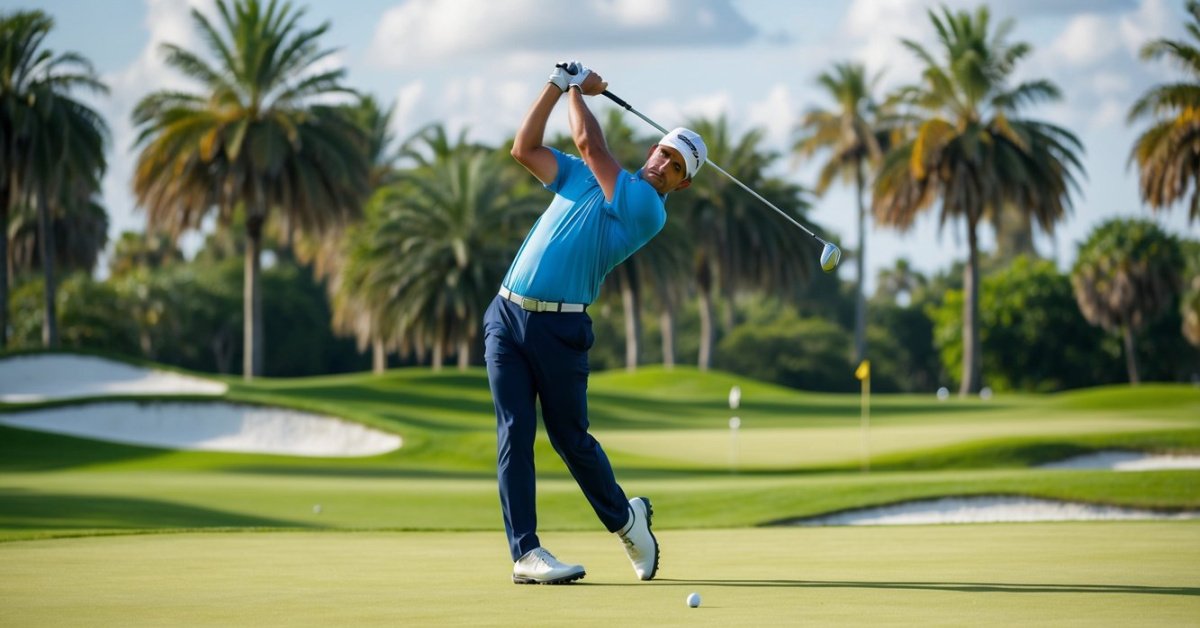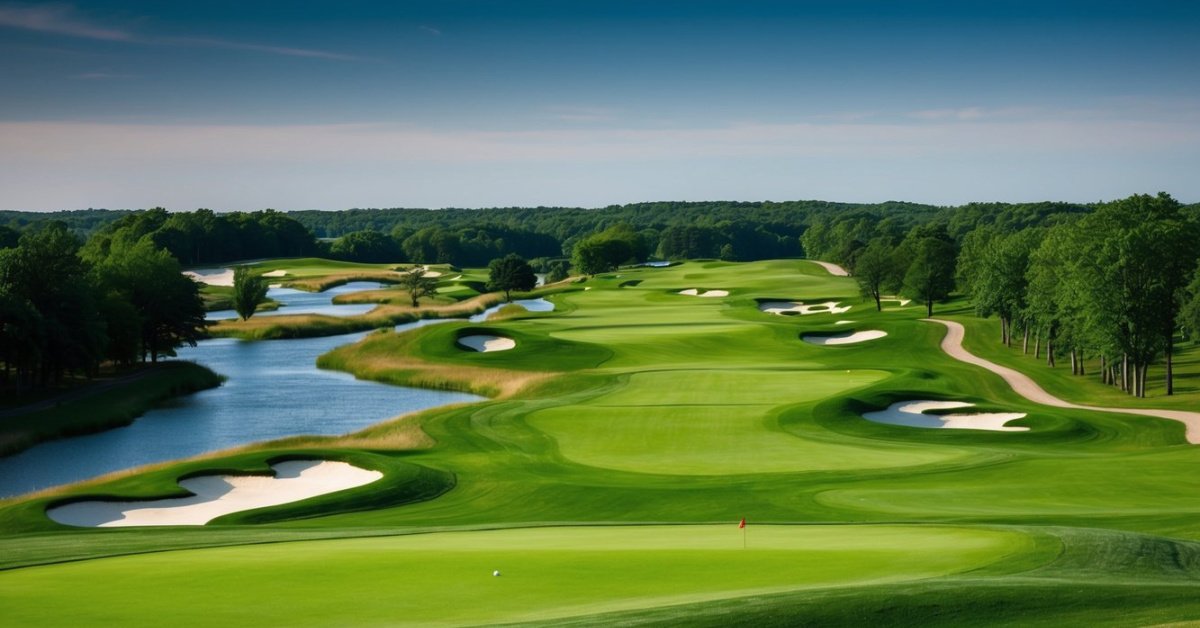Ever wondered what’s inside the bags of the world’s top golfers? Sure, their clubs get all the spotlight, but what about the golf balls they trust for those high-stakes shots? You might be surprised to find out that the choice of a golf ball can be as personalized and strategic as the selection of a putter or driver.

In this article, we’re diving into the dimpled world of professional golfers and the balls they use to win championships. You’ll get the lowdown on brands, designs, and the tech that sets these golf balls apart. Whether you’re a casual golfer or a die-hard fan, knowing what the pros play could give you an edge in your next round. So, let’s tee off and uncover the secrets behind the golf balls that the pros swear by.
Why Golf Balls Matter to the Pros
Imagine stepping up to the tee with a ball that’s not just a piece of equipment but an integral part of your game strategy. That’s how pros see their golf balls. For them, it’s not just about brand loyalty; it’s about performance, consistency, and the subtle nuances that align with their swing and conditions on the course.
Golf balls can significantly impact distance and control, with various designs catering to different playing styles. Low-handicappers like yourself might already know that a softer ball can aid in short game control whereas a firmer ball might provide extra distance off the tee. Professional golfers often go into meticulous detail about their ball’s compression rating, dimple pattern, and layer construction because they know how these factors can influence their score.
Tour players often test multiple balls under varied conditions to find the perfect match for their game. They’re looking for:
- Optimal spin rates
- Desired trajectory
- Consistent feel
- Dependability in the wind
Sponsors heavily influence what balls pros use, but the final decision rests on how that ball performs under tournament pressure. The right ball can mean the difference between a birdie and a bogey, particularly in crucial short game situations where touch and feel are paramount.
Remember, while you’re not facing galleries and the pressure of a major championship, you still want to play the best golf possible, right? Paying attention to what the pros use can offer insights into optimizing your own performance. Maybe it’s about finding that extra bit of control around the greens or ensuring your long game is as efficient as it can be. Whatever your goal, knowing the importance of golf balls to the pros may help you make a more informed choice the next time you’re selecting a dozen to take to the course.
Understanding Golf Ball Construction
Ever taken a close look at the golf balls you play with? You might think it’s just a piece of equipment, but it’s much more than that. Golf ball construction is a sophisticated process, with multiple layers working together to determine your ball’s performance.
Most professional golf balls are multilayer designs typically having three to five layers. Each layer serves a distinct purpose with the core being the beating heart. It’s primarily designed to generate energy, and often, the firmer the core, the farther your drive will fly. But remember, a firmer feel might not suit every swing.
« Best Golf Balls on Amazon: Elevate Your Game with Our Top Picks
Best Golf Ball for Windy Conditions: Conquer the Course with Confidence »
The layer right outside the core, the mantle, changes how the ball reacts upon impact. Soft mantles can increase spin for improved control on the greens. A pro might select a specific ball that responds perfectly to their irons, giving them an edge where it counts.
Following the mantle is the cover, which significantly affects spin and feel. Urethane covers are preferred by many pros because they offer a soft feel and high spin for short games, lending that exquisite control you’ve seen on TV.
Beneath the cover lies a world of engineering dedicated to flight and performance. Dimples aren’t just for aesthetics; they manipulate airflow around the ball, affecting trajectory and stability in the wind. The size, shape, and pattern of dimples can be tailored, and understanding these nuances might just shave strokes off your game.
It’s clear that professionals pick their golf balls with a level of detail akin to choosing a significant other. The ball must complement their unique swing and playing style, from the inner core to the dimpled exterior. Next time you pick a golf ball, think of it as a partnership – it’s your ally on the fairway and your accomplice on the green.
The Brands the Pros Trust
Many aspiring golfers often wonder what kind of magic lies within the golf balls that tour pros use to execute perfect shots. While there isn’t a one-size-fits-all answer, it’s clear that top players are discerning about the brands they entrust their game to.
Titleist, for instance, is a perennial favorite among pro players, especially the Titleist Pro V1 and Pro V1x models. These balls are engineered for consistency and superior performance. The Pro V1 is designed to deliver longer distance, consistent flight, and very low spin, while the Pro V1x offers a slightly higher flight with more spin and firmer feel.
On the other hand, Callaway’s Chrome Soft has won over a legion of players with its Dual SoftFast core designed for speed and its Tour Urethane Cover that brings short-game control into the mix. This ball offers a combination of distance and control that makes it a strong contender and popular choice among tour professionals.
TaylorMade’s TP5 and TP5x also command a loyal following. With a 5-layer construction, these models promise unmatched control and a complete performance to encompassing drive, iron play, and short game.
Bridgestone, albeit less hyped, is incredibly popular among several leading golfers. Their Tour B series is applauded for its advanced technology, with a Gradational Core that gives a superb balance between distance and forgiveness.
Here’s a quick look at the preferred balls among some top pros:
| Pro Golfer | Golf Ball Brand |
|---|---|
| Tiger Woods | Bridgestone Tour B |
| Phil Mickelson | Callaway Chrome Soft |
| Dustin Johnson | TaylorMade TP5x |
| Jordan Spieth | Titleist Pro V1x |
Keep in mind that while pros certainly influence trends, the best golf ball for your game might be different. Your swing speed, playing style, and where you want performance the most—distance, control, or spin—will guide your choice. Test out different brands and models to find your perfect match. Remember, it’s not about the name stamped on the ball but how it resonates with every aspect of your play.
Cover Designs and Performance
When you’re refining your game, understanding the impact of a golf ball’s cover design is as crucial as picking the right club. The surface isn’t just for show; it’s engineered for performance. Urethane covers are a common choice among pros for several reasons. First, they offer a softer feel which is prized for short games and around the greens. The softer urethane allows for better spin control and a more responsive touch, giving you that extra edge when it counts.
On the other hand, Surlyn-covered balls are designed for durability and distance. These balls might not provide the same level of finesse as urethane, but they can take a beating and keep on flying. Plus, their lower price point makes them a popular choice for the everyday golfer who doesn’t want to sacrifice a small fortune on lost balls.
The dimple pattern on the ball also plays a pivotal role in how it behaves in the air. Advanced aerodynamics come into play here, with pros favoring patterns that reduce drag and enhance lift. This means stable, long, and predictable flight characteristics, essential for those tight fairway shots or when you’re battling headwinds.
With advancements in R&D, companies have developed proprietary dimple designs. Take Titleist, for instance. Their Pro V1 series boasts a spherically-tiled 352 tetrahedral dimple design, aimed to deliver a consistent flight path. It’s this meticulous approach to detail that enables pros to execute shots with precision.
Remember, what works for the pros in their game might not translate perfectly to yours. Take into account your swing speed and playing strategy when choosing a ball. Testing out different covers and dimple designs can reveal a lot about how they interact with your individual play style. And while it’s tempting to go with what the pros use, finding your unique match could lead to better scores and a more satisfying game. So, hunt down those demo days at your local course, or pick up a sleeve of various balls before your next round. It’s all about getting that real-world experience to see what complements your gameplay.
The Science Behind Golf Ball Technology
When you’re out there on the course, every swing counts, and believe it or not, the core of your golf ball is as crucial to your game as your clubs. Pros lean towards multi-layer balls, which often feature a dual-core design. This inner construction is tailored to impact energy transfer, allowing you to shape your shots with precision and control. For instance, a soft inner core coupled with a firm outer core works wonders for your drive, providing a balanced feel between distance and spin.
Golf balls boast varied levels of compression, affecting how the ball reacts upon impact. Low-compression balls, often between 40 and 70, are perfect if you’ve got a slower swing speed—you’ll get that satisfying spring without needing to power through like a pro. Meanwhile, pros with high swing speeds tend to favor high-compression balls, around 90 to 100, to capitalize on energy transfer for maximum velocity.
Let’s talk about the mantle, the layer that lies between the core and cover. It’s the unsung hero that tweaks ball performance, influencing spin rates and control. With advanced materials and construction, pro-level balls have mantle layers designed to work in concert with the core and cover to produce a better game for the golfer.
| Compression Range | Swing Speed | Ball Type |
|---|---|---|
| 40 – 70 | Slower | Low-compression |
| 90 – 100 | Faster | High-compression |
- Soft Inner Core: Enhances energy transfer at lower swing speeds.
- Firm Outer Core: Provides greater control for shaping shots.
Lastly, modern golf balls integrate modern technologies such as temperature-stabilizing materials and aerodynamic enhancements. These tech advancements allow for consistent performance regardless of weather conditions, so your game stays unaffected by the chill of the morning or the heat of midday.
Remember, lower handicap players like yourself should focus on finding a golf ball that complements personal playing style, just as much as paying attention to what the pros use. Don’t be afraid to experiment with different technologies to find the sweet spot that works for you.
Conclusion
Frequently Asked Questions
What is the preferred golf ball design for professional players?
Professionals prefer multi-layer golf balls with a soft inner core and firm outer core for a balance of distance and spin.
How does ball compression affect golf performance?
Low-compression golf balls are better for players with slower swing speeds, while high-compression balls are ideal for professionals with faster swing speeds.
Why is the mantle layer important in golf balls?
The mantle layer affects the spin rates and control of the golf ball, influencing its flight and performance on the greens.
Can golf balls perform consistently in different weather conditions?
Yes, modern golf balls are made with temperature-stabilizing materials and aerodynamic features to ensure consistent performance in various weather settings.
How should a player choose the right golf ball?
Players should select a golf ball that complements their playing style and might consider experimenting with different golf ball technologies to find the best match.










